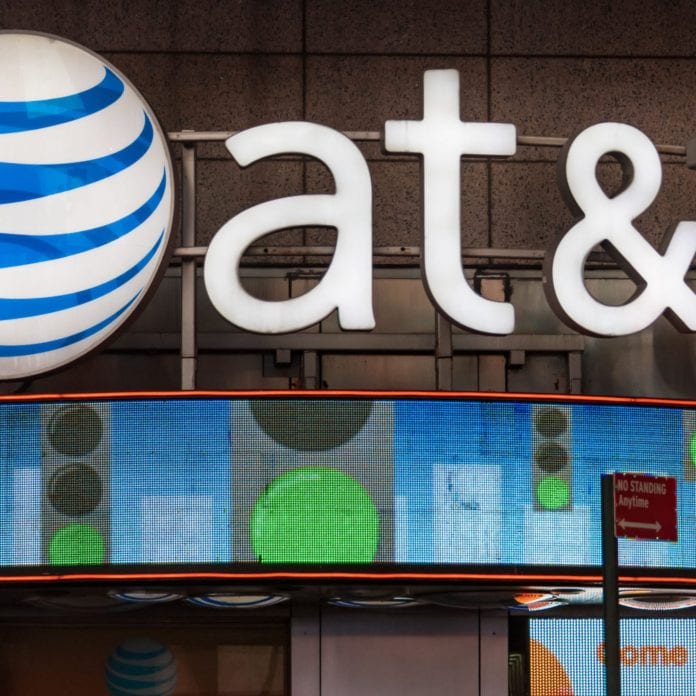AT&T gives a glimpse into 5G plans at Wells Fargo event; plans include a deeper dive on fiber, as well as a move to a real-estate-type tower model
Scott Mair, senior vice president of technology planning and engineering for AT&T, this week discussed how the carrier plans to evolve its LTE network to 5G with a focus on fiber assets, small cell deployments and new spectrum.
Mair said the carrier saw video traffic on its network grow 75% last year on the back of unlimited data plans. “It’s our responsibility to keep up with capacity,” he said. “We really owe it to the spectrum position we have. It is the best spectrum position in the industry. The most cost-effective way to deploy capacity is through spectrum; that’s why spectrum is so important.”
Earlier this year AT&T took some shots for what it calls 5G Evolution, available on Samsung Galaxy S8 and S8+ devices in Austin, Texas, and Indianapolis, Indiana. Competitors called out AT&T for marketing hype based on the underlying technologies, namely MIMO, carrier aggregation and 256 QAM–all functionality that falls under the umbrella of LTE-Advanced and LTE-Advanced Pro, not 5G New Radio, which is still being standardized by 3GPP.
Mair admitted as much during the interview. “We call them 5G Evolution, but it’s really applicatoin of LTE-Advanced and LTE-Pro capabilities. We have two live right now…we’re having really good results there. That’s a sign of things to come in how those markets will play out. Ultimately in Austin and Indy, we’ll also be deploying four-way carrier aggregation…and also LAA, which is unlicensed spectrum. We’ll get up to close to a gigabit per second.”
As to small cells, Mair said the carrier would deploy 1000s this year to provide pinpoint capacity and augment its 60,000 tower strong macro footprint. “Small cells absolutely will play a part in the network. We start with a macro network…and then we’ll augment with small cells. Small cells are a great way to provide capacity into areas where it’s difficult to build cell sites. As you build small cells for the LTE network, it pre-positions you for the infrastructure we’re going to need for 5G as well.”
He also discussed the benefits of a centralized radio access network (C-RAN) architecture associated with small cell deployments. “The brains at the base of the cell site are moved back to a centralized location and then the radios and the small cells, if you will, emanate out from there. One centralized unit can handle hundreds of small cells being built across a city. It gives us a couple of things: one is the ability to upgrade very quickly; that software happens in one place across hundreds of small cells; plus add additional future functionality. Having fiber and building fiber is a very important part of how you do small cells.”
But there’s more to fiber than just small cells, Mair expalined. “Fiber is key to 5G. We start from a position of strength with where we’re at. The key with fiber is how you actually deploy it. Integrating all of your needs as you build fiber is absolutely critical. When we deploy fiber, we don’t deploy just for a small cell solution, or just for a cell site solution. We take the collective needs of AT&T and our businesses,” ranging from home broadband to enterprise customer needs. “Bringing all those assets together is the way we build a fiber plan. The most important thing they need to know is the total needs of the area so they know how many fibers to put into the cable. The cost of a fiber build is not the fiber itself, but the placing costs, the build costs, down streets and down alleyways. You’ve got to get the fiber size right. We’re driving fiber deeper into the network.”
Noting that AT&T’s acquisition of DirecTV encompasses plans to pass 6 million homes with fiber by the end of 2017, with a longer-term goal of passing 12 million homes, Mair continued: “The economics of fiber are that as you build deeper, the next need is incrementally cheaper and quicker to do. That business I wanted to offer fiber services to that might 1,000-feet away,” after a residential build, “maybe now I’m only 500-feet from that business now. Every time I deploy fiber, I’m getting closer and closer and the next build is cheaper and quicker.”
Around its macro network, Mair said it’s imperative to reach a more sustainable business model associated with placing wireless infrastructure on towers owned by third parties.
“We have been very vocal,” he said. “The term we’ve used is unsustainable. Anytime you see a cost stream in a business that’s growing faster than the business itself, you have to take a look at it. What needs needs to change here? The model we have today from a lot of the major players is one that…the analogy we’ve used is renting an apartment. When I rent the apartment, I’m paying a rental fee. But when I want to buy a new TV and bring it in, or a new bedroom set and bring it in, I have to pay incremental dollars on my rent and keep paying, so the rent keeps going up.” With a “real estate model…We want to rent or lease square footage, or square inches, on a tower and, within that space on a tower, be able to do what we need to do for our wireless infrastructure. WE’ve been working with and are starting to work with some new partners that are subscribing to that model…with a better set of economics. That model sets us up on a more sustainable path.

